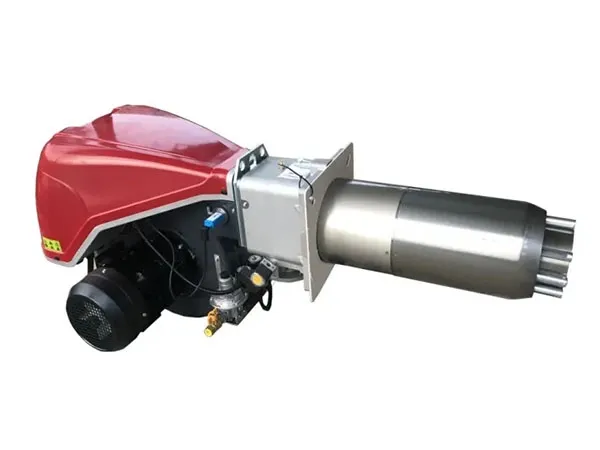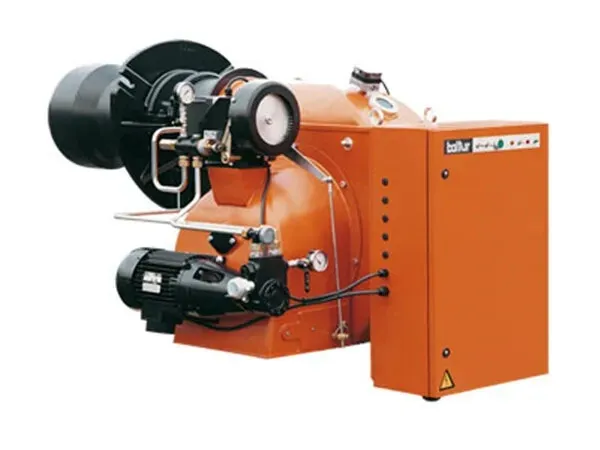Industrial burners are crucial components in various industries, providing the necessary heat for processes like manufacturing, power generation, and waste treatment. They can be broadly categorized based on several factors, including their fuel type, firing method, and specific application.

Gas Burners: These burners primarily use natural gas, propane, or other combustible gases as fuel. They are known for their clean combustion and precise temperature control.
Oil Burners: Designed to atomize and burn various types of fuel oil, such as light oil, heavy oil, or waste oil. They are often used in applications requiring high heat output.
Dual Fuel Burners: As the name suggests, these burners can operate on two different fuels, typically gas and oil. This offers flexibility and redundancy, allowing the burner to switch fuels based on availability or cost.
Solid Fuel Burners: These burners are designed to combust solid fuels like coal, biomass, or wood. They are often found in power plants and industries that produce solid combustible waste.
Atmospheric Burners: These burners draw in combustion air naturally from the surrounding atmosphere, without the aid of a fan. They are simpler in design and often used in smaller applications.
Forced Draft Burners: These burners use a fan to supply combustion air under pressure, allowing for more controlled and efficient combustion. They are common in larger industrial furnaces and boilers.
Induced Draft Burners: Similar to forced draft, but the fan is located downstream of the combustion chamber, pulling the exhaust gases out and thereby drawing in fresh air.
Natural Draft Burners: Rely on the natural buoyancy of hot gases to create a draft and draw in combustion air.

Process Burners: These are general-purpose burners used in a wide range of industrial heating applications, such as ovens, kilns, and dryers.
Boiler Burners: Specifically designed for use in industrial boilers to generate steam or hot water.
Duct Burners: Installed within a duct or an exhaust stream to provide supplemental heat, often in combined cycle power plants.
Regenerative Burners: These burners use a heat recovery system to preheat the combustion air with exhaust gases, significantly improving energy efficiency. They often operate in pairs, with one firing while the other recovers heat.
Low NOx Burners: Designed to minimize the production of nitrogen oxides (NOx), which are harmful pollutants. They achieve this through various techniques like staged combustion or flue gas recirculation.
Flat Flame Burners: Produce a wide, flat flame profile, ideal for applications requiring uniform heat distribution over a large surface area.
Radiant Burners: Generate heat primarily through thermal radiation, often used in applications where direct flame impingement is undesirable.
High-Velocity Burners: Produce a high-speed jet of hot gases, providing excellent convection heat transfer and often used in forge furnaces or heat treatment applications.
Each type of industrial burner has unique characteristics and is chosen based on factors such as fuel availability, required heat output, temperature control needs, emission regulations, and overall system efficiency.
Industrial Burner Troubleshooting Guide: Fix Common Problems & Boost Performance
2025-11-24How Industrial Gas Burners Boost Efficiency in Metal Processing: 5 Key Applications
2025-11-19Why Low-NOx Industrial Burners Are Essential for Efficient, Safe, and Sustainable Manufacturing
2025-11-15Industrial Burner Selection Guide: Improve Production Quality and Safety
2025-11-09Address: Room 504, Building 11, Wuzhou International Industrial Expo City, Old National Highway 310, Xigong District, Luoyang City, Henan Province
E-mail: shuxin@sxburner.com
Phone: +86 15516359168
Take every customer request seriously.

Shuxin
Electromechanical
+86 15516359168
shuxin@sxburner.com
Room 504, Building 11, Wuzhou International Industrial Expo City, Old National Highway 310, Xigong District, Luoyang City, Henan Province
+86 15516359168
shuxin@sxburner.com
Room 504, Building 11, Wuzhou International Industrial Expo City, Old National Highway 310, Xigong District, Luoyang City, Henan Province